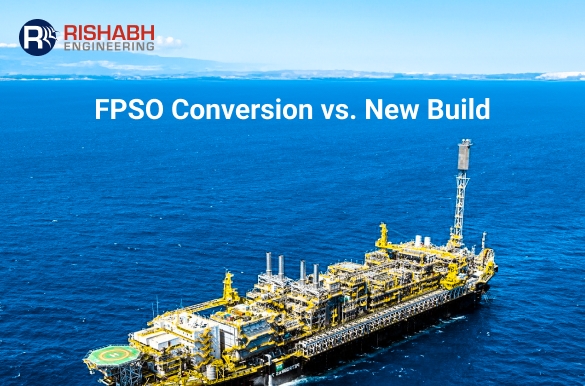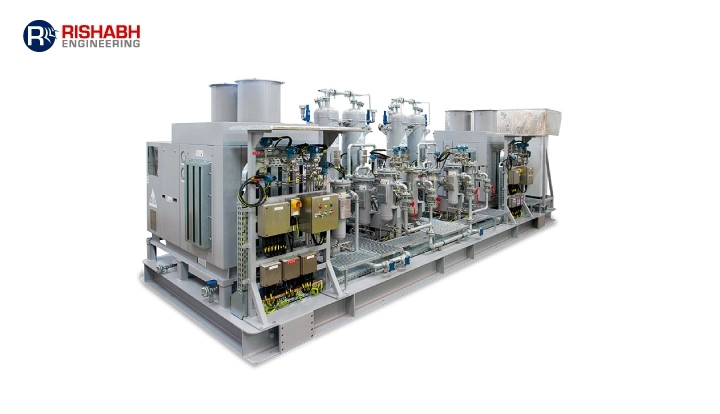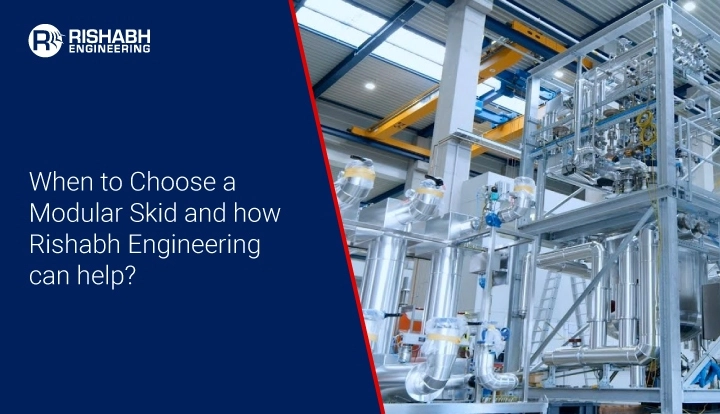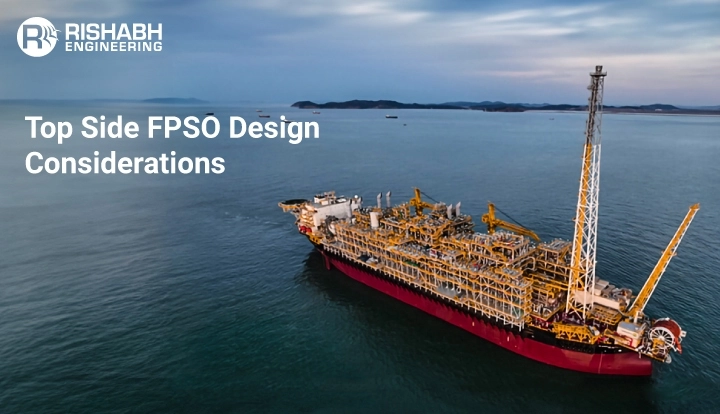
FPSO Conversion vs. New Build: Making the Right Choice For Offshore Production
Offshore oil and gas production mainly relies on floating production storage and offloading (FPSO) units. These complicated vessels are intended to extract, store, and discharge hydrocarbons from undersea sources. When companies from this industry evaluate their needs, they may face a difficult decision: convert an existing ship into an FPSO or construct a new one from the start. While each option has advantages and disadvantages, the decision depends on cost, timeframe, operational needs, and risk tolerance.

In this blog, we will dive deep into the debate on FPSO conversion vs. new build to help the relevant stakeholders reach some level of agreement. We will look at the critical factors that would influence this choice while providing a comparison and ultimately conclude on how partnering with a multidisciplinary design engineering company can enhance the success of their project.
Conversion vs New Build FPSO: Key Factors to Consider
- Cost: An essential aspect of offshore projects is that they often require converting an old oil ship into an FPSO, which is less expensive than building a new one. However, the cost reductions should be carefully considered in light of long-term performance, operational flexibility, and potential dangers.
- Timeline: FPSO conversions typically have shorter lead times because the hull already exists. New structures take longer since the whole design and construction process must be started from scratch, but they also allow for more customization to meet individual project demands.
- Customization: New constructions have the benefit of being mainly constructed to meet the project’s technical and operational needs, such as water depth, reservoir capacity, and production requirements. Converted FPSOs, on the other hand, may have constraints due to the tanker’s structural design.
- Operational Life and Efficiency: Because new assemblies are created with current technology and materials, they have a longer operational life and are more reliable and efficient. Conversions may need more regular maintenance because the hull and equipment are older.
- Flexibility: Converted FPSOs may be less flexible in accommodating future production or field expansion changes. In contrast, newer vessels can be designed with future flexibility in mind, allowing for potential upgrades or changes in reservoir management.
- Risk and Reliability: A freshly constructed vessel is more reliable since it is built from the bottom up to meet the unique environmental and operational challenges it will experience. However, if the original tanker is old or poorly maintained, modifications might pose structural integrity problems.
- Sustainability: The said considerations are becoming increasingly important across oil &gas projects. Notably, the newer vessel can incorporate energy-efficient designs & green technologies, which may not be possible in conversions – because of the inherent limitations of the existing hull and systems.
FPSO Conversion vs. New Build: Comparison
The below table highlights the critical differences between FPSO conversion and new build projects:
| Criteria | FPSO Conversion | FPSO New Build |
| Cost | Lower upfront costs. It may have hidden long-term costs for maintenance and upgrades. | Higher initial investment, but optimized for operational efficiency and longevity. |
| Timeline | Shorter lead time; faster deployment to production. | Longer lead time; design and construction can take years. |
| Customization | Limited customization; constrained by original tanker design. | Fully customizable to specific field needs and future expansion. |
| Operational Life | Typically shorter due to the age of the hull and systems. | Longer operational life due to new materials and technologies. |
| Efficiency | Less efficient; may require more maintenance and retrofitting. | Highly efficient with modern systems and design. |
| Flexibility | Less flexible for future upgrades or field changes. | Designed for future flexibility and upgrades. |
| Risk and Reliability | There is a higher risk due to the vessel’s age and potential structural weaknesses. | Lower risk with higher reliability due to new construction. |
| Sustainability | Difficult to integrate green technologies. | Easier to incorporate energy-efficient and sustainable technologies. |
| Regulatory Compliance | It may need significant retrofitting to meet modern regulations. | Fully compliant with the latest environmental and safety standards. |
| Resale Value | Lower resale value after field life. | Higher resale value or potential for redeployment. |
FPSO Conversion: When It’s the Right Choice
Converting an existing oil tanker into an FPSO may be the right decision under specific circumstances. Here are some key advantages:
- Cost-Effective: Conversion is often cheaper upfront, making it a viable solution for projects with limited budgets.
- Faster Deployment: Because the hull is already built, the lead time for conversion is significantly shorter. This is especially important for operators looking to quickly bring a field into production.
- Good for Short-Lived Projects: For oil fields with shorter production lifespans, a converted FPSO may be sufficient, as the vessel’s operational life matches the expected production period.
However, the reduced initial expenses of a conversion project may be countered by additional maintenance and the possibility of improvements as the FPSO ages. Companies must examine if a newer unit can offer long-term operating efficiency and dependability to offset a conversion’s immediate cost savings.
FPSO New Build: When It’s the Right Choice
A new construction FPSO may be the preferable alternative for projects when long-term performance, dependability, and customization are critical:
- Custom Design: Because every vessel part may be customized, a new design can be perfectly modified to the field’s specific demands, such as production capacity, water depth, and environmental conditions.
- Longer Operational Life: They are designed to survive for 20 to 30 years, thus reducing the need for frequent upgrades and maintenance.
- Advanced Technology: The new structure would usually have modern safety features and the design would be energy-efficient, making it more sustainable and cost-effective in the long run.
While the initial costs and lengthier lead times of new construction may appear overwhelming, this cost can be countered by the vessel’s better efficiency, dependability, and capacity to earn higher profits during its operating life.
The Role of a Multidisciplinary Design Engineering Company
Whether you pick an FPSO conversion or a new construction, collaborating with a multidisciplinary design engineering firm like Rishabh Engineering may make all the difference in your project’s success. These businesses have technical experience in various engineering disciplines—structural, mechanical, electrical, and others—to give a holistic solution that guarantees all project components are appropriately integrated and optimized.
Here’s how a multidisciplinary engineering company can help:
- Detailed Design and Engineering: Ensure the design for both new structure and conversions meets technical and operational standards.
- Cost Estimation and Budget Control: Accurate cost estimates assist stakeholders in making financially sound selections between conversion and new build options.
- Project Management and Execution: Coordinate complicated projects across disciplines for timely delivery and success.
Rishabh Engineering, a multidisciplinary design engineering firm, has worked on FPSO conversions and new constructions, thus providing precise technical solutions that minimize cost, achieve deadlines, and fast-track operational outcomes. Explore key considerations for choosing a partner to design FPSO packages & how Rishabh Engineering can help.
Final Words
Choosing between an FPSO conversion and a new construction is determined by various criteria, including cost, schedule, flexibility, and long-term operational requirements. Conversions might be a cheaper and speedier option, especially for short-term projects. On the other hand, a new construction allows for more customization, operational efficiency, and long-term reliability, which may result in higher returns on investment during the project’s lifespan.
Finally, the selection should be considered after thoroughly evaluating project needs, such as budget, production schedules, and future operating concerns. Collaborating with a skid engineering services company would guarantee that all phases of the project are carefully managed, enhancing both the technical and financial success of your FPSO.
Ready To Make The Right Choice For Your FPSO Project?
Our experienced team has strong experience of developing industrial packages for both conversion and new build FPSO.
Related Blogs
Related Blogs
Modular Process Skid Packages – Types and Benefits
Modular Process Skid Packages are today emerging as the most…
Critical Considerations For Choosing The Right Modular Skids
Modular Process Skid Packages, commonly called modular skids, are compact,…


